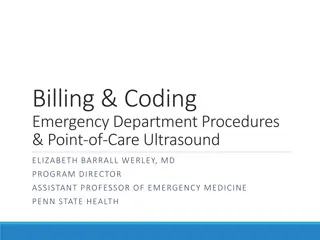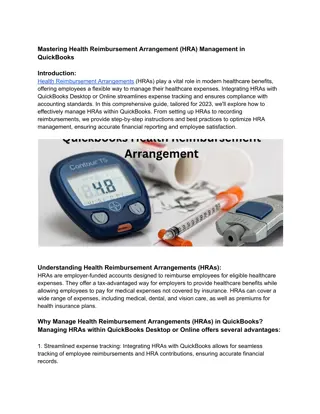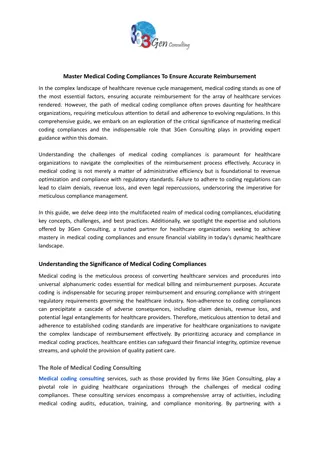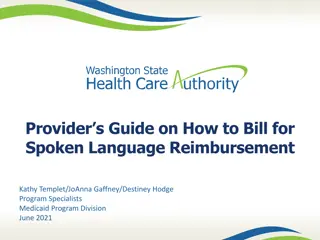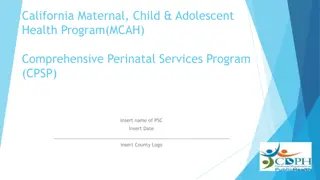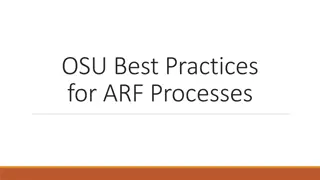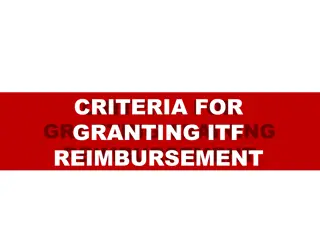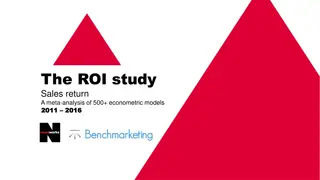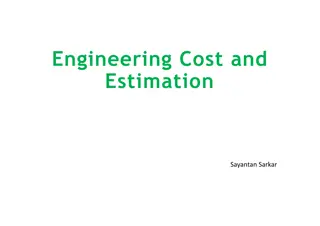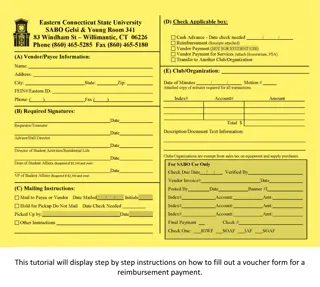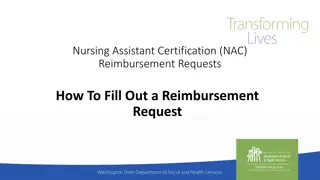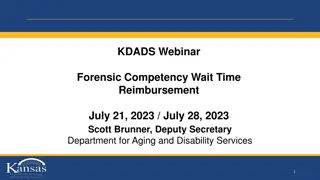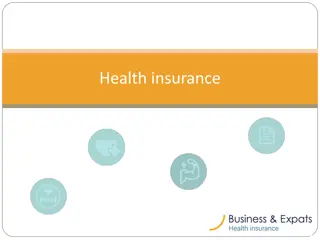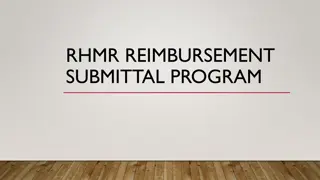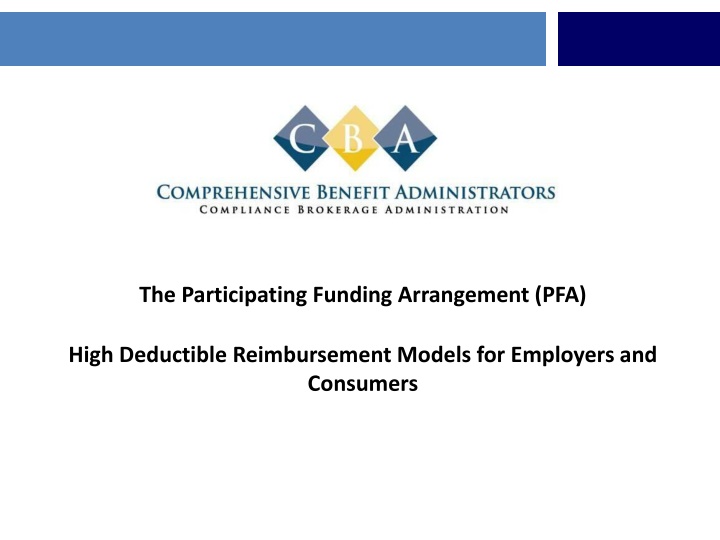
Innovative Participating Funding Arrangement (PFA) Models for Cost-Effective Healthcare
Explore how Participating Funding Arrangements (PFA) offer a unique approach to managing healthcare costs for employers and consumers. Learn about the benefits of PFA plans and how they can enhance cost control while ensuring quality care delivery.
Download Presentation

Please find below an Image/Link to download the presentation.
The content on the website is provided AS IS for your information and personal use only. It may not be sold, licensed, or shared on other websites without obtaining consent from the author. If you encounter any issues during the download, it is possible that the publisher has removed the file from their server.
You are allowed to download the files provided on this website for personal or commercial use, subject to the condition that they are used lawfully. All files are the property of their respective owners.
The content on the website is provided AS IS for your information and personal use only. It may not be sold, licensed, or shared on other websites without obtaining consent from the author.
E N D
Presentation Transcript
The Participating Funding Arrangement (PFA) High Deductible Reimbursement Models for Employers and Consumers
What is a Participating Funding Arrangement (PFA)? The PFA Plan is a split-funded arrangement. Includes fully-insured Medical Insurance Coverage and self-insured Cost- Sharing Coverage. The PFA is designed to trim the fat off your traditional group health plan. The PFA allows employers and employees to be shareholders in controlling their collective health care costs. This allows the group health plan the ability to create plan assets they otherwise would have forfeited to the insurance company.
What is a Participating Funding Arrangement (PFA)? How A PFA Works Step 1: Purchase A Low Cost Fully Insured Health Plan Problematic Out of Pocket Costs Low Premium Cost Step 2: Buy Back Benefits Using PFA Uses Premium Savings To Lower Problematic Out Of Pocket Costs Combined PFA Split-Funding Arrangement Lower Premium Cost Lower Out of Pocket Costs
Participating Funding Arrangement (PFA) Case Study Step 1: Purchase a low cost fully insured health plan ABC Company (Low Cost Health Plan) Company Name ABC Company (Current) Carrier: Tufts Health Plan Blue Cross Blue Shield Plan Design: HMO $500 Deductible PPO $2,000 w. 20% coinsurance Deductible: $500 / $1,000 Family $2,000 / $4,000 Family Copays: $25 $25 Coinsurance: None 20% RX Copays: $15 / $30 / $50 $15 / $30 / $50 Out-of- Pocket Maximums: $5,450 / $10,900 Family $5,450 / $10,900 Family
Participating Funding Arrangement (PFA) Case Study Step 2: Buy back benefits using the PFA ABC Company (Low Cost Health Plan + PFA Buy Back Company Name ABC Company (Current) Carrier: Tufts Health Plan Blue Cross Blue Shield PPO $2,000 w. 20% coinsurance + PFA Buy Back Plan Design: HMO $500 Deductible Deductible: $500 / $1,000 Family $500 / $1,000 Family Copays: $25 $25 Coinsurance: None None RX Copays: $15 / $30 / $50 $15 / $30 / $50 Out-of- Pocket Maximums: $5,450 / $10,900 Family $5,450 / $10,900 Family
Participating Funding Arrangement (PFA) Case Study Sold PFA Plan Design & Premium Costs Combined Savings Combined PFA Savings Analysis PPO $2,000 w. 20% coinsurance Premium $660,000.00 PFA Expected Premium (Claims + Administration) $156,570.00 Combined Premium Costs $816,570.00 Current Tufts Health Plan Premium $880,000.00 $63,430.00 (Under Current Premium) PFA Savings
Participating Funding Arrangement (PFA) Case Study PFA Premium Comparison $900,000.00 $880,000.00 $880,000.00 $860,000.00 Traditional $500 Deductible Plan $840,000.00 $820,000.00 $817,000.00 $800,000.00 $780,000.00 PFA $500 Deductible Plan $760,000.00 $740,000.00 $720,000.00 $700,000.00 Traditional $500 Deductible Plan PFA $500 Deductible Plan
Participating Funding Arrangement (PFA) 4 Year Case Study Premium Comparison (65 Subscribers) Traditional vs. PFA $1,000,000.00 $980,000.00 $976,100.00 $960,000.00 $940,000.00 Traditional $500 Deductible $920,000.00 $900,000.00 $880,670.00 $880,000.00 PFA $500 Deductible $860,000.00 $840,000.00 $820,000.00 $800,000.00 2011 2012 2013 2014 -Estimated Annual Premium Savings: $95,430 -Cumulative 4 Year Savings = $381,720 ** Assumes both Traditional and PFA options received same dollar amount increase to premiums from insurance carrier.
Participating Funding Arrangement (PFA) 4 Year Case Study Surplus / Premium Premium Performance: $62,000 Decrease Projected PFA Claims: $150,330 Actual Claims Paid: $89,700 Surplus of $60,630 1st Year Savings = $122,630 2011 Premium Performance: $13,600 Increase Projected PFA Claims: $124,800 Actual Claims Paid: $83,500 Surplus of $41,300 2nd Year Savings = $27,700 2012 Premium Performance: $12,000 Increase Projected PFA Claims: $115,620 Actual Claims Paid: $75,800 Surplus of $39,820 3rd Year Savings = $27,820 2013 Premium Performance: $38,500 Increase Projected PFA Claims: $90,000 Actual Claims Paid: $85,000 Surplus of $5,000 4th Year Added Cost = $33,500** 2014 ** Group went through 4 renewal cycles before seeing an added cost to the plan.
Participating Funding Arrangement (PFA) 4 Year Case Study Surplus Performance (65 Subscribers) Annual PFA Surplus Tracking $160,000.00 $150,330 Projected $140,000.00 $124,800 Projected $115,620 Projected $120,000.00 $60,630.00 $41,300.00 $100,000.00 $90,000 Projected $39,820.00 $5,000.00 $80,000.00 $60,000.00 $89,700.00 $40,000.00 $85,000.00 $83,500.00 $75,800.00 $20,000.00 $0.00 2011 2012 2013 2014 Actual Claims PFA Surplus
Participating Funding Arrangement (PFA) 4 Year Case Study Surplus / Premium (65 Subscribers) PFA 4 Year Surplus / Premium Performance Performance Total Premium Increases $2,100 Total Surplus Accrued $146,750 Net PFA Performance $144,650 (Surplus /Plan Asset) Est. Cumulative Premium Savings $381,720 Est. Net Savings $528,470 Net Increase 0.4% Average Annual Increase 0.1%
Participating Funding Arrangement (PFA) 4 Year Case Study Surplus / Premium (65 Subscribers) Case Study Highlights: 5 years with no benefit change 4 years with no carrier or benefit change 5 years with a 0.4% increase to their payroll rates/contribution Created a $144,650 plan asset they otherwise would have given to the insurance companies OVER A HALF MILLION DOLLAR OF ESTIMATED SAVINGS!
3 ROI Based Reimbursement Strategies Employers Can Implement NOW To Reduce Health Care Costs Reimbursement Specialists, Inc. A Comprehensive Benefit Administrators Company
3 Healthcare Consumer Types 1. Healthy Low Risk 2. Transitional Moderate Risk 3. Chronic High Risk
Where Claims Come From 69% $3,263 PMPM 70% 60% 60% $491 PMPM 50% $88 PMPM Membership 40% 26% 30% 23% Cost 14% 20% 8% 10% 0% Healthy Transitional Chronic
One Size Doesnt Fit ALL There is no silver bullet to controlling health care costs. You need multiple strategies and tools working in synergy with the traditional health insurance AND medical delivery system. You need to impact all 3 consumer types in order to effect costs in a meaningful way.
3 Impact Strategies for Cost Containment through RSI 800MD Telemedicine Program (Consumer Impact: All 3 Consumer Types) World Care 2nd Opinion Program (Consumer Impact: Chronic Highest Cost) Shields Simply Save (Consumer Impact: Transitional and Chronic)
800MD - Telemedicine 70% of Office Visits can be handled via Telemedicine According to the US Census Bureau the average working-aged adult has 3.9 visits per year. According to the Agency for Healthcare Research and Quality, an average visit to a doctor s office costs $199 and an outpatient hospital visit is $1,275. Weighted average cost = $240 Per Visit. Average cost of Telemedicine = $38 Consult Fee AND is not run through traditional insurance.
800MD Cost Containment Goal: Change the Delivery System 3 years for full implementation with employees. Impact 1 out of every 5 office visits. Employer Pays the full $38 Charge for 800MD Consult Fee (Optional and Flexible) Sample Company: (200 Employees with 400 Members) - Total Annual Premium = $2,000,000 - 400 x 3.9 visits = 1560 visits per year - 1560 / 5 = 312 visits - 312 visits x $240 - 312 visit x $38 Total Estimated Savings = $63,024 = $74,880 = -$11,856 **Savings is the equivalent to removing a high claimant off of your Large Loss Report or 3.2% of total Premium
World Care 2nd Opinion Get it right the first time. 15% of the time diagnosis changes. 70% of the time treatment modified. Eliminates the waste on high cost treatments. 8 working day average turnaround time.
World Care 2nd Opinion Cost Containment Member wanted to know risk in other breast, treatment options, and timing of appropriate surgery
Shields Simply Save $2,500 Average saving of $1,400 per scan vs. hospital $2,000 $2,000 10% of population will need an MRI this year $1,500 $1,000 20 Convenient MA Locations and growing $600 $500 Customizable tool kit to help employees change the conversation with their doctors $0 Shields Facility Non- Partnering Hospital Cost comparison tools / saving calculator Average cost for MRI
Shields Simply Save Cost Containment Goal: Change the Delivery System 3 years for full implementation with employees. 50% of MRIs and PET Scans done through Shields MRI Employer Pays $50 Incentive for use of Shields MRI (Optional and Flexible) Sample Company: (200 Employees with 400 Members) - Total Annual Premium = - 400 x (5% MRI + 5% PET) = - 40 Scans x $1,400 Savings = - 40 Scans x $50 Incentive = Total Estimated Savings = $54,000 $2,000,000 40 Scans per year $56,000 - $2,000 **Savings is the equivalent to removing another high claimant off of your Large Loss Report or another 2.7% of total Premium
Benefits of Adopting Multiple Strategies Goal: Adopt All 3 Strategies 3 years for full implementation with employees. Sample Company: (200 Employees with 400 Members) - Total Annual Premium = - 800MD Savings Annual - World Care Saving Example = - Shields Savings Total Estimated Savings $2,000,000 $63,000 $41,000 $54,000 $158,000 = = = **Savings is the equivalent to removing 3 high claimant off of your Large Loss Report or another 7.5% of total Premium
Thank You! Michael McKenna President and CEO Comprehensive Benefit Administrators 93 Longwater Circle Norwell, Ma 02061 Toll Free: (877) 993-5600 ext. 207 Fax: (774) 463-0208 mmckenna@cbacompanies.com


